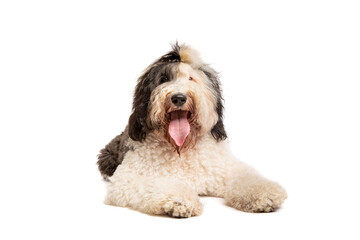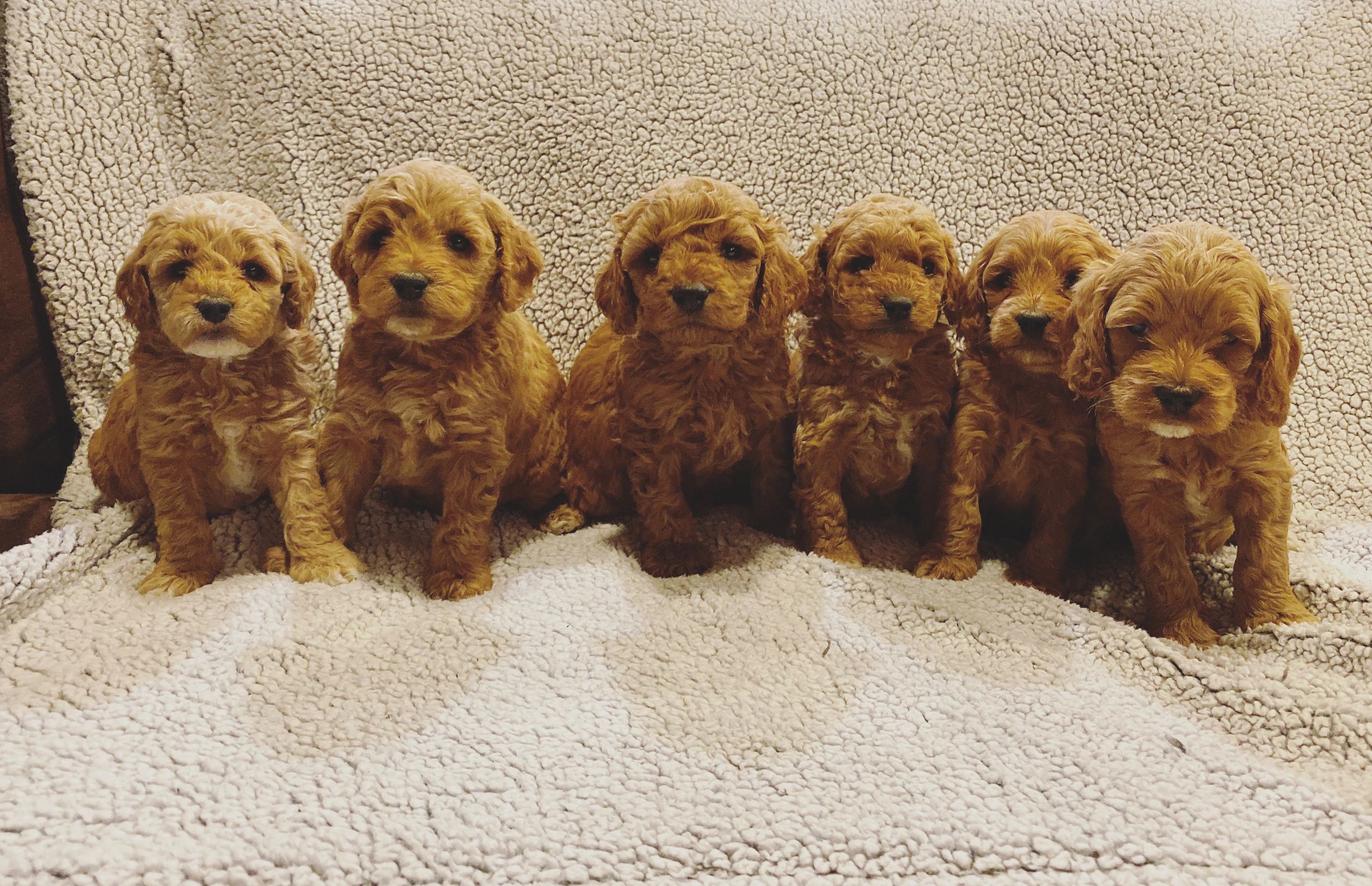A puppy must be taught to chew appropriately, not on people or their clothing. Provide heavy-duty chew toys. Teach the “leave it” command.
Capturing a behavior involves watching Sheepadoodle Puppies For Sale Ohio for the right choices and marking when they occur with a clicker. Then rewarding the correct choice with a treat, excited verbal praise, or playtime with a toy.
Basic Cues
Puppies learn through the use of cues, which are words or gestures that tell the dog that a reward is available if she assumes a specific position. Cues are the foundation of all puppy training. They range from easier lessons, like your puppy learning her name, to more difficult ones, such as a solid recall.

When training new cues, it is important to keep sessions short and consistent. This is because puppies have short attention spans, and if they feel overwhelmed by an exercise, they may lose interest in it altogether. Also, make sure to end each training session on a positive note. This will help to build your pup’s confidence and encourage them to want to train again!
It’s also important to train each cue in a distraction-free environment, as this will help your puppy focus on the behavior. Then, once the puppy is performing the behavior well, you can begin to train it in more challenging environments, such as outside and around other people.
One of the most basic cues is a simple sit, which is an essential training skill for puppies. It teaches them impulse control and manners, as well as the ability to respond to their owner’s requests. To teach the cue, first cup a piece of food in your hand and hold it in front of your puppy’s face. Slowly move it above her head until she is sitting, and then reward her with the treat. Using the same method for each repetition, you can quickly teach her the meaning of the cue and how to perform it.
Capturing is another useful technique for teaching dogs new behaviors. It involves watching for the right choice of behavior, marking it with a clicker or other marker (such as “Yes” or “Good”), and then immediately rewarding it with a treat. Once your puppy has mastered the simple sit, you can try this method with other behaviors, such as luring her to come to you.
In this example, you can lure her by standing across the room from her and calling her name in an upbeat, encouraging tone. As soon as she runs to you, say her recall word and then give her a treat and lots of praise. This will be a fun game for both of you, and it will teach her that your words carry a lot of importance!
Basic Commands
Puppies love attention, so the more positive reinforcement you can provide during training sessions the better. Use a clicker to mark desired behaviors, and provide plenty of treats to speed up the process.
Start with simple verbal commands such as sit, down, and come. When your pup is comfortable with these basic commands, you can begin to incorporate them into daily activities. For example, if you are walking your dog and they chase a squirrel down the road, you can say “heel,” and then toss a squeaky toy ahead of them. As they follow the toy, command them to sit. Continue this method with increasing distance and duration until they remain seated until you release them with another cue such as “stay.”
Once your puppy has learned to respond to their name, you can use the command to stop them from running off into oncoming traffic or chasing a squirrel in the middle of a busy street. Start this training in a distraction-free environment, and lure them with high-value treats to create an association between the command and the behavior.
Next, work on the recall command in similar settings. Again, lure with high-value treats or play a game of hide and seek. This helps to keep the training fun and also teaches your dog that coming back to you will not always mean the end of a play session or reward. You can then slowly introduce the command in more difficult situations such as in a park where there are a lot of distractions.
To teach the leave it command, present your pup with a desirable object in the palm of your hand and close your hand as they reach for it. As soon as they turn their head or back to you, give them a click and treat. Once they have mastered this command, you can train them to ring a bell to let you know when it is time to go outside. This can help prevent your dog from grabbing garbage off the ground or getting into toxic plants and will allow you to calmly and quickly get them away from dangerous situations.
Behavioral Conditioning
Once your puppy understands the meaning of a cue, it’s important to begin matching that cue with behaviors. This is where the concept of operant conditioning comes in, as your puppy will learn that if a particular behavior follows a certain cue, it’s likely to get rewarded.
Operant conditioning also helps to teach your puppy how to moderate their behavior based on the consequences of their actions. For example, if your dog gets punished for bad behavior such as chewing furniture, they’re less likely to repeat that behavior in the future.
The first step in this process is observing your puppy’s behavior to find out what they are doing naturally without you prompting them to do so. This technique is called capturing and involves watching for the right behavior, then marking it (clicker, verbal marker, etc.) and rewarding it immediately afterward.
This can be done with a variety of activities, but one of the most useful is having your puppy work for their food! This is an excellent way to practice impulse control and teaches them to look to you for direction. We highly recommend pairing this with some basic body handling lessons so they become comfortable with the various things you’ll need to do to them throughout their life, like brushing their teeth, combing their hair, and giving them medications.
As your puppy progresses in their obedience training, try increasing the duration of each command and introducing more complex commands like Heel and Stay. You can also try working with them outdoors and in more challenging environments such as crowded areas, on walks, or even in long-lines to safely practice their recall!
Always remember to only use positive reinforcement during training sessions and never punish a pup for mistakes in the house, as this can damage their growing bond with you and their confidence in what you’re asking of them. Instead, if your puppy eliminates inside the house, distract them with a toy or outside and let them out once they’re calm, then reward them for following their potty command!
Behavioral Modification
Puppies need to learn a range of behaviors to be safe and well-mannered members of their families. Positive reinforcement is the key to success with most of these. It strengthens the bond of trust, makes training fun, and helps dogs learn to love things they used to worry about. It is also faster and more effective than punishment-based training.
Behavior modification is a series of techniques designed to eliminate unwanted behaviors through desensitization and counter-conditioning. A trainer will start by exposing the dog to the triggering stimulus in a low-stress environment, such as their kitchen or living room, and then gradually increase the intensity of the stimuli. After the dog exhibits a calm, non-reactive response to the stimuli, they are then given a reward. This process can be repeated until the puppy displays the desired behavior without a response to the trigger.
For example, when teaching a recall cue, a helper and the puppy are separated in different rooms with the puppy wearing a collar and leash. The trainer then calls the dog using the recall word in an upbeat tone and encourages them to run back to them with clapping and kissy noises. As soon as the dog reaches the trainer, they are given a treat and lots of verbal praise. This can be repeated until the puppy is running to their owner on command.
In more advanced behaviors, trainers use a technique called shaping to teach the behavior through trial and error. The trainer waits for the puppy to guess what they want them to do and then marks (clicker, “Yes”) and rewards the behavior when it is correct. The trainer then teaches the puppy what the goal of the behavior is by increasing the criterion for how close the puppy’s guess is to the target.
Behavior modification can be challenging and requires patience, especially when it comes to reversing older habits like biting or chewing inappropriate items. However, it is possible to teach puppies of all ages polite behaviors. By the time they are one year old, Naito recommends that all dogs be able to ask politely for their favorite toys, sit and stay for playtime, and be left alone in their crate without becoming destructive or barking.
